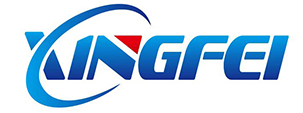In the LED display industry, the industry’s claimed general brush and high brush are usually defined as 1920HZ and 3840HZ refresh rate, respectively, the usual implementation method is the dual latch drive and PWM drive mode, the specific implementation of the program performance is mainly as follows: [Dual latch drive IC]: 1920HZ refresh rate, 13Bit display gray scale, with the elimination of ghosting function, low-voltage start up function to remove dead pixels and other functions; [PWM driver IC]: 3840HZ refresh rate, 14-16Bit displays gray scale, comes with functions such as ghost elimination, low voltage start, and removal of dead pixels.
The latter PWM drive scheme has more gray scale expression at the same time in the refresh rate multiplication situation, the integrated circuit functions and algorithms used in the product are more and more complex, and the natural drive chip uses wafer unit area size to increase the cost.

However, in the post-epidemic era, the global situation is unstable inflation and other external economic situations, LED display manufacturers want to offset the cost pressure, launched a 3K refresh LED products, in fact, the use of 1920HZ refresh gear of the dual-edge trigger drive chip program, by reducing the gray scale with load points and a series of functional parameters performance indicators in exchange for 2880HZ refresh rate, This kind of refresh rate is commonly referred to as 3K refresh rate to falsely call the refresh rate above 3000HZ to confuse consumers with the PWM drive scheme of the benchmark 3840HZ refresh rate, and there is a suspicion of confusing the public with shoddy charging.
Because the resolution 1920X1080 is usually called 2K resolution in the field of display, the resolution 3840X2160 is also commonly referred to as 4K resolution. Therefore, the 2880HZ refresh rate is naturally confused to the 3K refresh rate level, and the picture quality parameters that can be achieved from the real 3840HZ refresh are not in an order of magnitude, but only by sacrificing the comprehensive indicators in exchange for the prominence of individual indicators to reach the publicity of the concept of stealing.
When using a general LED driver chip to do a scanning screen application, to improve the visual refresh rate of the scanning screen, there are three main methods:
1. Reduce the number of image gray scale sub-fields: By sacrificing the integrity of the image gray scale, shorten the time for each sweep to complete the gray scale count, so that the number of repeated lights of the picture is increased in one frame time to improve its visual refresh rate.
2, shorten the minimum pulse width of the control LED conduction: by reducing the LED light field time, shorten the cycle of each sweep to complete the gray level count, so that the number of repeated lighting of the screen increases, however, the response time of the traditional driver chip can not be less than 50ns, otherwise, there will be low gray unevenness or low gray color cast and other abnormal phenomena.
3. Limit the number of serial drives of the drive chip: For example, in the 8-line sweep application, the number of serial drive chips needs to be limited to ensure that under the high refresh rate, the data can be correctly transmitted in the limited time of rapid sweeping.

Before the scan screen wraps, you need to wait for the next line of data data to be written, this time can not be shortened (its length of time is proportional to the number of chips), otherwise the screen will display errors, after deducting these times, the LED can be effectively lit time to reduce, so in a frame time (1/60 sec), all scans can be normally lit the number of times is limited, LED utilization is not high (see figure below). In addition, the design and use of the controller has become more complex, the bandwidth of internal data processing needs to be improved, resulting in reduced hardware stability, coupled with the increase in the parameters that the user wants to supervise, once the setting value is slightly neglected, it will often cause unstable display performance.

The requirements for image quality in the market are increasing day by day, and although today’s driver chips have the advantages of S-PWM technology, there are still bottlenecks that cannot be broken in the application of scanning screens. For example, the operation principle of the existing S-PWM driver chip is shown in the following figure. If you use the driver chip of the existing S-PWM technology to design a 1:8 scanning screen, the visual refresh rate is about 30Hz at a 16-bit gray scale and a PWM count frequency of 16MHz. At the 14-bit gray scale, the visual refresh rate is also about 120Hz. However, the visual refresh rate needs to be at least above 3000Hz to meet the human eye’s requirements for picture quality. Therefore, when the demand value of the visual refresh rate is 3000Hz, a more functional LED driver chip is required to meet the demand.
Refresh is usually based on the video source 60FPS of the picture frame rate of the integer n times to define the classification, in general, 1920HZ is 32 times the 60FPS frame rate, most of which are used in the rental display of this high-brightness high brush field unit board displayed in the 32-scan below the level of LED display unit board; 3840HZ is 60FPS frame rate 64 times, most of which are used in the indoor LED display low brightness high brush 64 scan below led display unit board.

Normal display oblique scan of the picture
However, the display module based on the 1920HZ driver framework is forcibly increased to 2880HZ, which requires 4BIT hardware processing space to break through the upper limit of hardware performance, and the gray scale series is sacrificed, and the hardware output control pulse width signal lower limit accuracy is difficult to achieve, resulting in screen details must be distorted and unstable.

Abnormal display of obliquely swept pictures



